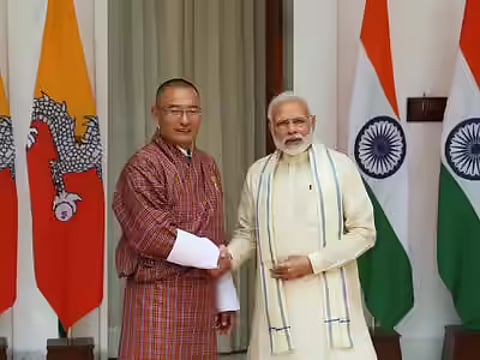
- Home
- Live Blog
- Breaking News
- Top Headlines
- Cities
- NE News
- Sentinel Media
- Sports
- Education
- Jobs

New Delhi: During his official visit to Bhutan on November 11-12, 2025, Prime Minister Narendra Modi announced significant initiatives aimed at further strengthening the close ties between India and Bhutan. Central to these developments are two major railway projects, the Kokrajhar–Gelephu and Banarhat–Samtse lines, which will provide Bhutan its first-ever rail connectivity by linking key Bhutanese towns with India’s extensive railway network. Fully funded by the Indian government at a cost of Rs 4,033 crore, these rail links are projected to enhance trade, tourism, and facilitate easier movement between the two countries. Modi highlighted that increased connectivity brings with it greater opportunities and prosperity, labelling these railway projects as milestones in Bhutan’s transport infrastructure.
The visit also witnessed the inauguration of the 1,020 MW Punatsangchhu-II Hydroelectric Project, a collaborative effort expected to boost Bhutan’s hydropower capacity by 40%. Modi pointed out that India–Bhutan energy cooperation extends beyond hydropower projects to include ventures in solar energy, reinforcing Bhutan’s position as a nation powered entirely by renewable energy.
Prime Minister Modi also participated in celebrations marking the 70th birth anniversary of Bhutan’s former King Jigme Singye Wangchuck and attended the Global Peace Prayer Festival, underscoring the deep cultural and spiritual bonds that unite the two nations.
Further solidifying support, India committed a concessional credit line of INR 4,000 crore to fund Bhutan’s energy development efforts and announced the establishment of an immigration checkpoint near Gelephu to facilitate trade and investment flows.
This visit reflected the enduring friendship and mutual respect between India and Bhutan, aligning with India’s Neighbourhood First policy and setting the stage for enhanced cooperation in infrastructure, energy, and sustainable development, signaling a prosperous future for both Himalayan neighbours.